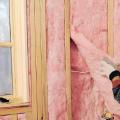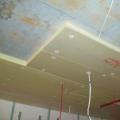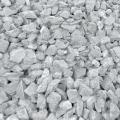The correct solution for plastering a stove: proportions, composition, instructions
The stove is a practical and reliable source of heat. The installation of stove heating requires taking into account many nuances, including the issue of external decoration. Extreme operating conditions, with constant alternation of heating and cooling cycles, place strict demands on the composition of plaster mixtures, which must withstand temperature fluctuations while maintaining decorative qualities. Today we will talk about how to properly make a mortar for plastering a stove so that it meets all the requirements for this type of building materials.
photo from the site http://1pokirpichy.ru
Mortar for plastering the stove: quality characteristics
Finding a good stove maker is not an easy task. But when he finished the work, the next problem arose in full force, because now the stove needs to be lined. Seams in masonry and surface irregularities tend to accumulate dust and dirt. As a result, not only cleanliness suffers, since when heated, contaminants tend to burn, filling the room with an unpleasant odor. In addition, over time, the masonry will lose its tightness, and smoke will be drawn into the room.

photo from the site www.rmnt.ru
The simplest and most affordable way to finish a stove is plastering. When choosing which solution is needed for plastering the stove, it is necessary to take into account the characteristics that the coating should have after hardening, namely:
- Heat resistance. The ability to withstand heating to sufficiently high temperatures without consequences is a basic requirement, without which all other qualities are meaningless. The outer surface of the oven, based on sanitary standards, heats up to 95⁰C. In practice, thin-walled stoves or stoves made with improper masonry techniques can be heated to 120⁰C at certain points.
- Thermal conductivity. Do not forget that the main function is heating, which means the conduction of heat from the walls into the room must be preserved, and mixtures with thermal insulation abilities are absolutely not suitable.
- Plastic. After drying, the coating should have the property of slightly stretching, repeating the change in volume of the masonry when heated. Non-plastic plasters will crack, requiring systematic restoration of the finish.
- Environmental friendliness. If the solution contains toxic components, then when the temperature rises they will be released into the air, which is undesirable for both residential and non-residential premises.
Thus, you need to choose the composition of the solution for plastering the stove responsibly, because the efficiency of heating, the durability of the coating and the health of the people living in the house depend on it.

photo from the site http://www.liveinternet.ru
Plaster mortar for stoves: composition and varieties
Traditionally, clay-based solutions were used for plastering the stove, which ensured the necessary plasticity of the material. The masters selected the recipe and the ratio of components experimentally, largely focusing on their own experience, and using small tricks that they were reluctant to share. Today, the building materials market offers many options for replacing the usual clay composition, giving the consumer the opportunity to choose.
The following solutions are most often used for plastering stoves:
- Simple clay.
- Lime-gypsum.
- Cement-clay.
- Lime-clay.
- Ready-made heat-resistant plasters.
Regardless of the chosen recipe, the components used must meet certain requirements:
- Clay. Before preparing the solution, it is recommended to soak the clay for 24 hours, after which it is necessary to add water so that light impurities and contaminants float to the surface. Excess water is drained, and the clay is stirred until soft and homogeneous, after which a mixture of dry ingredients is added.

photo from the site http://kharkovbeton.kh.ua
Controlling clay fat content
You can check how fatty the clay you are using is using the Shepelev test. To do this, you need to roll it into a ball the size of a walnut and squeeze it with your fingers. Normally, cracks on the surface of the ball form when compressed by 1/3, but clay that is too oily is more plastic and requires more compression.
- Sand. Fine river sand is used, which must be sifted through a 10 mm sieve to remove shells and other unwanted impurities. The amount of sand directly depends on the fat content of the clay - the higher this indicator, the more sand you will need. If wet sand is used, this must also be taken into account, since the recipes indicate proportions for the dry state. To avoid mistakes, the sand should be dried.
- Water. At the construction stage, water of insufficient quality is often used, which is unacceptable in the case of preparing plaster. The water should have no musty or muddy odor, and the iron content in it should also not exceed the norm. If the water turns yellow after settling, this is an indicator of high iron content and should not be used.
- Binder. To give strength to the finished finish, a binder is needed, which is usually asbestos or crushed fiberglass. Some craftsmen prefer to use fine straw or hemp for this, appealing to the environmental friendliness of these materials.

photo from the site priusadebka.ru
How to prepare a solution for plastering a stove?
When preparing the solution, the main attention should be paid to the ratio of the components and the order of their mixing to obtain a uniform consistency. The standard preparation method is to mix the dry ingredients, followed by adding liquid until the required thickness is obtained, but it is worth considering the nuances that depend on the type of plaster chosen.
Simple clay mortar for oven plaster
To prepare such a solution you will need the following components:
- Clay – 1 volume part.
- Sand – 2 volume parts.
- Asbestos (fiberglass or straw) – 1/10 by volume.
When preparing clay mortar for plastering a stove, the proportions may change. If the clay you received has a high fat content, the volume of sand must be increased to 3 or 4 parts, based on the results of the Shepelev test or your own experience.
The secret of seasoned masters
Experienced craftsmen advise adding 200 g of salt to a bucket of solution to avoid the appearance of cracks in the future. This advice has a logical basis - salt is hygroscopic and slows down the setting of the plaster, making it dry evenly. Subsequently, when heated, hygroscopicity prevents drying out and cracking of the coating.
Lime-gypsum mortar for stove plaster

photo from the site http://nashaotdelka.ru
The components for this type can be purchased at any construction supermarket:
- Slaked lime – 2 parts by volume.
- Gypsum – 1 volume part.
- Sand – 1 volume part.
- Asbestos fiber 2/10 by volume.
Keep in mind that gypsum sets very quickly, and you need to prepare the amount that you can use within half an hour, because it will not be possible to dilute it after preparation.
Do-it-yourself cement-clay mortar for plastering a stove
The addition of cement is intended to give strength to the coating. The following ratio of components is recommended:
- Portland cement – 1 volume part.
- Clay – 1 volume part.
- Sand – 2 volume parts.
- Asbestos – 1/10 part by volume.
For mixing, it is convenient to use a drill with a mixer attachment, which will allow you to mix the components evenly without forming lumps.
Lime-clay mortar for plastering a stove: proportions

photo from the site http://myshtukaturka.ru
To prepare this composition you will need:
- Lime - 1 part by volume.
- Clay – 1 volume part.
- Sand – 2 volume parts.
- Asbestos – 1/10 part by volume.
As you can see, the differences with the previous composition are small, but thanks to the addition of lime, this clay solution for plastering the stove will be lighter, which means that fewer layers of paint will be needed to give the finished look.
Ready-made heat-resistant plasters
A limited number of manufacturers produce such highly specialized products, but in general, buying heat-resistant plaster will not be a problem, and the cost of domestically produced plasters is quite affordable.

photo from the site http://granstroy.ru
The following brands are available on the Russian market:
- Terracotta is a Russian company with a very affordable pricing policy. The prepared solution retains its properties for 60 minutes, giving even novice craftsmen time to develop.
- ORTNER is an Austrian brand specializing in materials for the construction of fireplaces and stoves. High quality is consistent with the cost of building mixtures.
- Rath HefnerPuts is another representative of Austria, the undoubted advantage of which is the fact that the mixture is not produced in dry form, but in the form of a solution, without requiring dilution.
- Plitonite is a domestic plaster that contains reinforcing fibers. The hardening time of Plitonit fireproof plaster is 30 minutes, which is also quite a decent indicator.
- The stove is a clay-cement mixture in which the optimal proportions have already been met, and all that remains is to add water. This eliminates the need to think about how to prepare a clay mortar for plastering the stove.
As you can see, the choice is quite wide, and allows people with any financial capabilities to choose their own option. Ready-made fireproof plasters can withstand temperatures of 400-600⁰C, so they can be used for the exterior of a stove without fear.
The right job with the right solution
The characteristics of plaster are important for the quality of the coating, but without following the application technique, even an expensive solution will certainly crack during operation. Therefore, if you do the work yourself, strictly follow the algorithm of actions.

Photo from the site: homemasters.ru
Preparatory stage
- After completion of the masonry, the stove should stand for at least a month until the end of the initial shrinkage.
- Join the joints, deepening them by 5-10 mm to increase the area of contact with the solution.
- Clean the wall from dust and dirt using a brush and heat the oven to 50-60⁰C.
- Moisten the masonry thoroughly with water so that the brick does not absorb moisture from the plaster, speeding up its drying.
Reinforcement of the finishing layer

photo from the site http://obustroeno.com
It is necessary to reinforce the surface, and there are several options for performing this stage:
- Metal soft mesh. The metal must be galvanized so that the contours of the mesh do not show stripes of rust. You need to take care of attaching the mesh at the stage of masonry, leaving wire outlets for it. If this has not been done, then the mesh will have to be secured with screws or nails into the seams.
- Burlap or gauze. Opponents of this method of reinforcement point to the flammability of burlap, while supporters talk about its environmental friendliness and the impossibility of ignition in clay. Having decided to reinforce the plaster with burlap, it is cut into squares, dipped in a liquid solution and glued to the wall after spraying.
Plastering

photo from the site http://kursremonta.ru
The plastering stage will require work to be performed in the following sequence:
- Padding. You need to use deep penetration primers and prime the surface before applying each layer.
- Spray. To spray, use a brush and the same solution as for plaster, only diluted with water to the consistency of liquid kefir. This is done to fill small irregularities and roughness, so as not to leave air voids that will lead to cracks.
- Plaster. The solution is applied using a trowel and smoothed with a trowel, the thickness of each layer is 2-3 mm, while it is advisable to keep the total thickness of the plaster within 10-15 mm.
- Covering. It is also done with a liquid solution, after which it is rubbed with a trowel. In the case of clay mixtures, grouting can be done with a rag soaked in the solution.
- The stove cannot be lit for the next three days, and the first heating should not exceed half the maximum power of the stove.
If the finished plaster does crack, the crack must be repaired. To do this, it is expanded with a spatula, the surface is wetted and filled with the same composition that was used during the main work. Don't forget about primer and grout.
Now you know exactly how to make a mortar for plastering a stove, and let it please you with its impeccable appearance and cozy warmth for many years to come.
 Construction materials and list of works
Construction materials and list of works Proper insulation of a wooden ceiling in a private house
Proper insulation of a wooden ceiling in a private house What types of crushed stone are there?
What types of crushed stone are there?